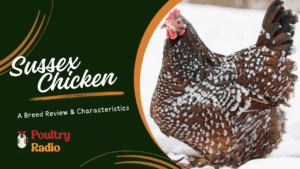Fluffy Elegance: Why Silkie Chickens Are the Hottest Backyard Trend
The Silkie chicken has been referred to as fluff-balls, aliens from another planet, teddy bears, and a variety of other terms. They are among the fluffiest chicken, making them a popular pet and a great kid choice.
Introduction
They are renowned for having friendly personalities and having strong mother nature. These birds are available in a range of colors, including white, black, blue, partridge, and others, each with its attraction. Silkies differ from’ regular’ chicken appearance in a variety of ways!
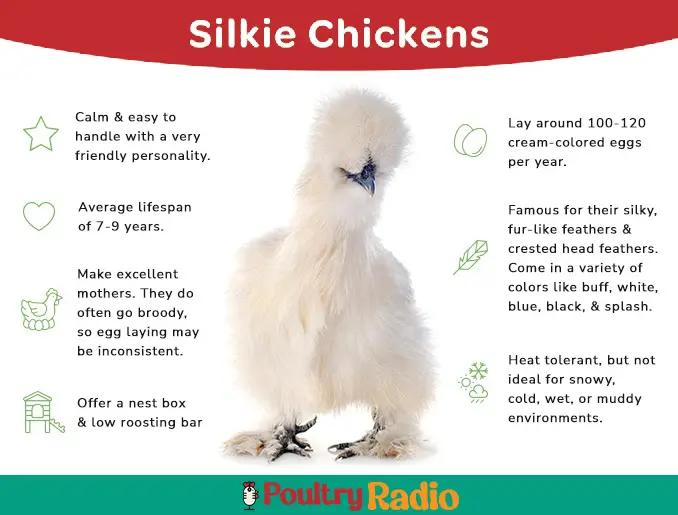
If a comb is present, it should have the shape of a “walnut,” being virtually circular, and the head should be crested, looking somewhat like a “pom-pom” (similar to a Polish chicken). Any other color than black or dark mulberry on the comb indicates that the chicken is not truly a Silkie. They should have a short, broad at the base beak that is grey or blue. It has black eyes.
Their breasts should be large, their backs should be short, and their bodies should be broad and thick. Instead of the typical four toes found on chickens, they have five. The first and second toes should have feathers.
The primary feathering resembles the under-down of typical hens exactly. A Silkie chicken cannot fly since its feathers aren’t attached. Additionally, it indicates that the feathering is not waterproofed, which makes a wet Silkie chicken look pathetic. If they do become very wet, they must be towel-dried or even blow-dried, which, if done frequently, they like.
| Friendly nature: | Yes |
| Silkies Lifespan: | 7-9 years |
| Silkies Egg color: | Cream to tint |
| Silkies Egg Production: | 3-4 per week, (100-120 per year) |
| Number of Toes: | Silkies have Five toes on each foot, which means they have total 10 toes. |
| Feather color: | Black, Blue, Buff, Self-blue, Splash, White, Gray |
| Silkie Chicken Weight: | Large breeds: 3 lb. (Female) 4 lb. (Male) Bantam: 1.2 lb. (Male) 1.1 lb. (Female) |
| Broodiness: | Yes |
| Good with Children’s: | Yes |
| Cost of Silkie Chicken: | Chick: $10-$15 Hen or Rooster $25-$50 |
Egg laying:
- Silkie chickens are normally poor layers
- 100-120 eggs per year
- The appearance of eggs is cream to tinted
- Egg size is small to medium
If you need an egg-laying machine then go through the article on top egg-laying breeds of chicken.
Temperament:
Silkie chickens are renowned for having friendly personalities and having strong mother nature.
- Calm, friendly, and docile
- Great foragers
- Pets and ornamental birds
- Cannot bear wetness
Are Silkies Noisy?
Silkies are not at all noisy chickens. This makes it reasonable given their calm temperament. This makes this breed ideal for those who live in apartments and are permitted to keep chickens. They might be a terrific addition to your lifestyle if they have some space. You won’t need to be concerned about your neighbor complaining about the noise of the chickens.
Health and Wellness: Keeping Your Silkies Happy
Marek’s disease may, sadly, affect silkies quite easily. Although many breeders of silkie chickens have bred their stock for innate immunity, you can still vaccinate your birds. Because Silkies are incredibly fluffy, mites and lice may target them, thus you need to take precautions with these tiny fluffballs. To give them a little bit greater vision, you might also need to clip the feathers surrounding their eyes. The fluff in the back occasionally has to be trimmed for cleanliness and breeding reasons. Aside from this, the Silkie chicken is extremely tough and often lives for 7-9 years, however, it can live longer with lots of care.
If a silkie chicken gets wet?
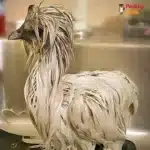
Quickly drying your fluffy Silkie chicken might be the difference between life and death for your bird. This “furry” breed of chickens is not insulated like other chicken breeds since their feathers do not adhere to one another. This means that, especially if they live in cold climates, they can quickly get a chill and die from hypothermia.
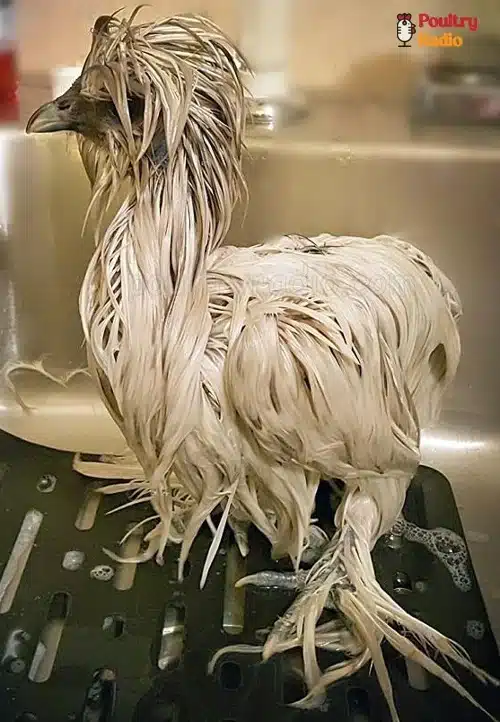
Diet and Feed for Silkie Chicken
The dietary requirements of the silkie chicken are similar to those of other chicken breeds, But some important points should be kept in mind while feeding these birds.
Basic Diet for Silkies:
Silky chickens should be fed a balanced diet that should include commercial chicken feed, fresh feed, and natural feed.
Commercial Feed for Silkies:
Initially, the chicken should be fed high-quality commercial feed. Different types of feed are available in the market like starter, grower, layer, and broiler feed so choose the feed according to your bird case age.
Protein:
Protein is very important for the bird’s feathers and its egg production. Like other chicken breeds, silky chicken also needs 16 to 18 percent protein. Younger chicks have slightly higher protein requirements (18-20%).
Water Requirement for Silkies:
Make sure your Silkies constantly have access to fresh, clean water.
Calcium:
Layer hens need extra calcium for their eggshell formation. You can give them oyster shells or crushed egg shells in separate containers.
Fruits and Vegetables for Silkies
Fruits and vegetables such as leafy greens, carrots, apples, and melons are all edible to silkies. You can give these out as treats. Feeding them things like avocados, uncooked beans, and citrus fruits should be avoided because they are harmful to hens.
Grains:
Scratch grains such as crushed corn, wheat, and barley, can be given as an occasional treat. They’re not a complete diet but can provide some entertainment and variety.
Keep in mind that your Silkies’ particular nutritional needs may change according to their age, level of activity, and environmental factors. To ensure their health and well-being, a balanced diet must be provided.
Pros and Cons of Having a Silkie Chicken
| Pros | Cons |
|---|---|
| Other chickens get along with them. | Risk of Merak’s disease |
| Reasonable and good pets | Not very tolerant of the cold |
| They are long-lived. | Not good egg layers |
| Other chicken get along with them. | Due to their feathers’ fuzzy texture, they are more susceptible to lice and mites. |
| Make wonderful mothers | Known for being broody |
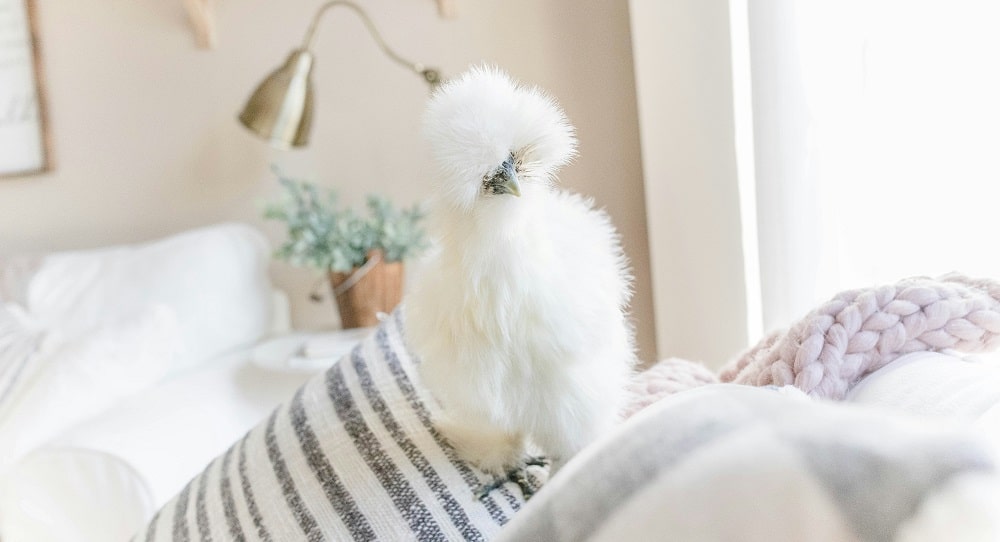
Frequently Asked Questions About Silkie Chickens
Can Silkies Chicken Handle Cold?
Silkies tolerate cold conditions well and are comparatively cold-hardy birds. These hens can cope with cold temperatures as long as they are provided with shelter over their heads.
Can we eat the eggs that Silkie chickens lay?
Yes, a silkie chicken is known as a backyard hen. They produce edible, white, or cream-colored eggs.
Are All Silkies Bantams?
Silkies are only acknowledged as bantams in some nations, including the United States. However, breeders raised them to become huge fowl in some areas.
What Is the Silkie Egg Laying Cycle?
An average silkie chicken may lay 120 eggs a year, or 2-4 eggs on average per week.
Are Silkie Chickens Expensive?
A silkie may vary in cost. Silkie chicks of the highest quality can cost $10–$15, while hens can cost $20–$50.
How many toes do silkies have?
Chickens have four toes on each foot, three in front and one at the rear, like most other bird species. But Silkies go one step further with this number: they have ten toes total, five on each foot.







